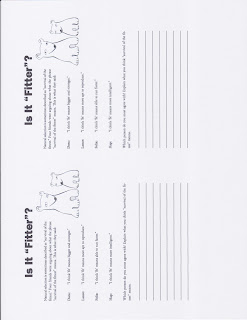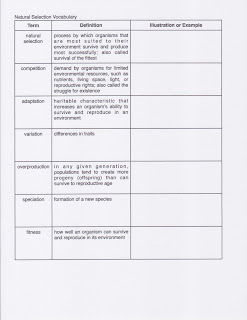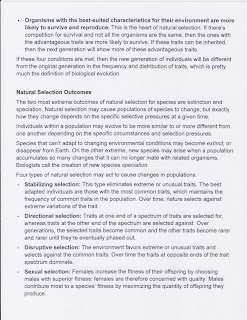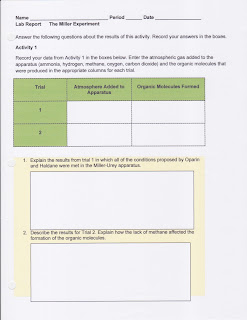ESSENTIAL QUESTION: How do scientists think life continues to change on Earth?
RELEVANCE: Do people really change?
NGSSS: SC.912.L.15.13; MAFS.912.N-Q.1.1; LAFS.910.SL.1.1
LEARNING OBJECTIVES: Students will be able to:
-identify the conditions required for natural selection.
-relate the conditions required for natural selection to differential reproductive success.
-Continue Journey To Mars Project.
BELL RINGER - Is it fitter?
VOCABULARY: adaptation, adaptive radiation, ancestor, artificial selection, bottleneck, coevolution, convergent evolution, directional selection, disruptive selection, evolution, extinction, fitness, founder effect, gene glow, gene pool, genetic drift, gradualism, mutation, natural selection, punctuated equilibrium, speciation, stabilizing selection
HOME LEARNING: HL 6 Darwin’s Natural Selection
AGENDA
WHOLE GROUP
Correlations were made between science and other courses.
Students completed the bell ringer is it fitter? You can find a copy below.
Complete as your bell ringer. Then, write your answer and reasoning on a sticky and place in the appropriate column on the board.
Home learning 5 was collected and reviewed. Home learning 6 was distributed. You can find a copy below.
This is HL 6. Write darkly: I will make you a copy and return the original.
Students worked on notes from the natural selection reading passage received last class.
Students worked on the Journey to Mars Project.
Students also received the new vocabulary list. You can find it below.
Students also received the new vocabulary list. You can find it below.
Complete the vocabulary by writing or drawing something to help you remember each word.
SMALL GROUP/INDEPENDENT PRACTICE/DI
Students who complete work early should go to Edgenuity and work on the topics they received less than 70% from the last exam
HOTS:
-How does Darwin address the uncertainties surrounding his theory of descent with modification? What do his methods reveal about the nature of scientific inquiry?
-Does Darwin’s theory of natural selection suggest an optimistic or a pessimistic view of the world?
EXIT STRATEGY:
Three things I learned, two things I found interesting, one question I still have.















